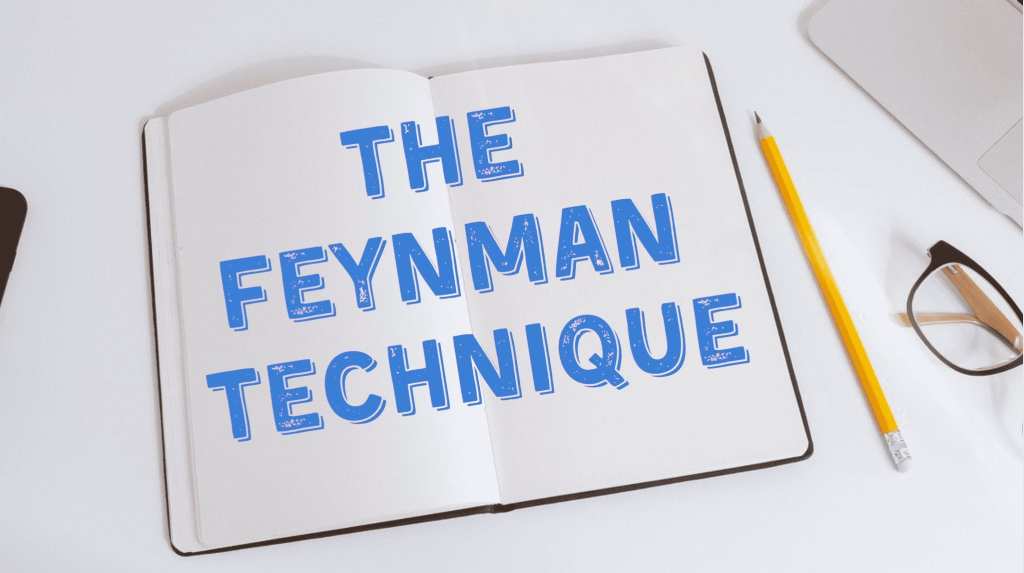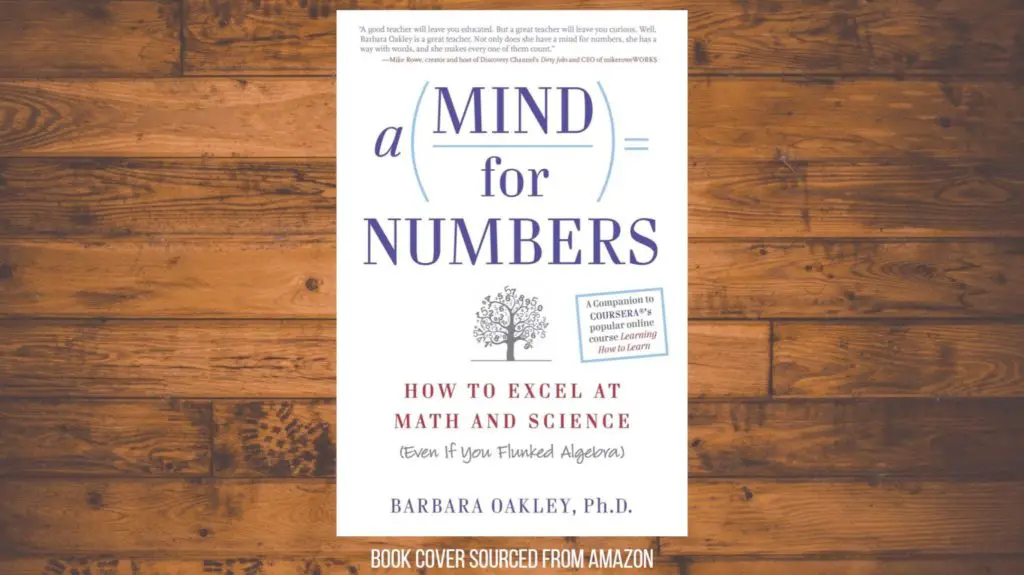This post may contain affiliate links, which means I’ll receive a commission if you purchase through my links, at no extra cost to you. Please read full disclosure for more information.
In the task of learning, whether for school, life, or your career, a common way to go about it is reading information until it sticks in your head.
You read a textbook and take notes. You organize the condensed notes and read them again in an attempt to retain everything. Perhaps you are a student and have a big exam coming up.
Your notes are beautiful and you can nearly recite them word for word since you read them so frequently. However, once you get to the exam and you’re asked a question, your mind goes blank and you can’t find the answer. Nothing on the test is looking like the information you studied.
How could this have happened? You put in so many hours reading and memorizing. Well, that right there might actually have been the problem.
Familiarity is not understanding
You spent time memorizing information and becoming familiar with it, but you never developed a full understanding of the material.
It is one thing to know what things are, like vocabulary and definitions, but it’s another thing to understand a concept and express that knowledge through application and demonstration.
Your weaknesses in understanding will never be pointed out to you if your primary method of learning is rereading and memorization. You won’t realize that you don’t know something until it is too late. You need to test yourself and demonstrate your knowledge beforehand in your studies.
One way to study and learn a concept is to demonstrate your knowledge of something. A simple and effective way to do this is through the Feynman Technique.
WHAT IS THE FEYNMAN TECHNIQUE?
The Feynman Technique is a mental model used to help learn and fully understand any topic.
The method is implemented by walking through a topic in a teaching format to identify what you know and solidify that in your long-term memory while also identifying what you don’t know so you can practice and learn.
The Feynman technique is named after Richard Feynman, a Nobel Prize-winning physicist. Richard won the Nobel Prize for his work on Quantum Electrodynamics and was also known for being someone who could explain complex topics to anyone in a way that they could understand, regardless of their background in math or science.
This ability to explain complex topics and principles in simple language would lay the foundation for the Feynman Technique.
Despite the accomplishments of Richard Feynman, he thought of himself as an ordinary person who simply studied hard and efficiently.
This is liberating because if he viewed himself as a common person and achieved great accomplishments, it’s possible you and I can do the same thing. With enough effort and the right methods, we can learn anything we want, even topics that seem out of reach for the current versions of ourselves.
USES OF THE TECHNIQUE
This technique accomplishes several things. It allows you to…
- Learn new concepts
- Identify and close gaps in current knowledge
- Recall and review information to prevent forgetting
- Practice teaching skills
- Deepen your understanding of a topic
Now that we know what this mental model can be used for, let’s walk through how you implement it.
STEPS TO USING THE FEYNMAN TECHNIQUE

The steps to the Feynman technique will show true comprehension of a topic by explaining what you know about a topic in simple terms.
The process is straightforward, yet powerful, and is done in 4 steps.
- Choose the concept you want to learn or test
- Teach/explain the concept
- Identify gaps in your knowledge and go back to the source material to review
- Organize and further simplify the explanation
You can perform this method in a variety of ways on paper, a whiteboard, and a PowerPoint presentation.
For now, let’s assume we are using the Feynman Technique through the use of a notebook.
1. Choose the concept you want to learn or test
Open a fresh page in the notebook and write the concept or topic you want to study at the top of the page.
Writing down the topic will provide clarity and focus for you to stay on track as you begin spilling everything you know onto the page.
2. Teach/explain the concept
Begin writing everything you know about the topic as if you were teaching it to someone. Not only should you write like you are teaching it to someone, but you should teach it as if you are teaching the topic to a child.
This will require you to simplify complex concepts into concepts that a child would be able to understand. Putting something into your own simple words requires a full understanding of a topic. Remember the quote:
“If you can’t explain it simply, you don’t understand it well enough.”Albert Einstein
Avoid only explaining what things are. Instead explain the where, why, how, etc about the topic.
Knowing the name of something and actually knowing something are different. One is factual knowledge and one is conceptual knowledge.
Factual knowledge requires recall and recognition, which is considered to be a lower level of learning, according to the book Make It Stick. Conceptual knowledge requires an understanding of the interrelationships of elements to a topic.
You want to display conceptual knowledge during this step.
Walk through examples and test yourself. Draw pictures and diagrams showing how everything within the topic relates to each other.
3. Identify gaps in your knowledge and review
Step 3 is where all the value of this method comes from in my opinion. As you begin teaching yourself or someone else in step 2, you’ll find yourself well-versed in certain things you are studying, but you’ll also come across gaps in your knowledge.
Imagine you are reviewing the balance sheet and you’re able to fully discuss the assets portion of it. However, you struggle and forget the liabilities and stockholders’ equity side of the balance sheet. You find difficulty writing anything about it during your session.
The Feynman Technique is great because it helps you identify what you don’t know just as much as it helps you identify what you do know. It’s great to know what you know, but knowing what you don’t know will allow you to pinpoint what you need to review.
Once you pinpoint your weaknesses on a topic, go back to the source material (a textbook, lecture notes, online video, etc) and study the areas that you struggled with to fill in the gaps in your knowledge.
Don’t waste time
When most people study, they re-read the entire chapter, the entire set of notes, etc. While it is valuable to study everything, it is more efficient to know what you are weak in so you can put more focus to that area.
Re-reading all material will lead to familiarity with the text and the illusion of knowledge. You’ll associate familiarity with understanding and the two are not the same.
Explaining things through the Feynman Technique shows you if you have true understanding. You are starting with a blank page and generating information onto the page from the knowledge you have stored.
4. Organize and further simplify the explanation
The final step after identifying gaps and reviewing is to organize what you have learned again into a new teaching. Teach yourself or someone again with the fuller understanding you have gained and aim to simplify it even further.
You don’t want to regurgitate the wording from the source material.
Leave out the technical jargon and explain the bare bones of the topic. This allows you to drill down to the most fundamental components of a topic. You want to be able to understand the fundamentals and build your knowledge outwards from that point.
BENEFITS OF THE FEYNMAN TECHNIQUE
The benefits of the Feynman technique for learning and memory and plentiful.
Understanding – You’ll gain a fuller and deeper understanding of a topic.
Fundamentals – Presenting and teaching the information in simple terms requires you to know the absolute fundamentals of any topic. You can’t explain anything simpler than its fundamentals.
Memory – The actions of performing the Feynman Technique will store information in long-term memory.
Efficiency – Studying efficiency is increased. Since this method allows you to quickly identify weaknesses, you can dedicate study towards them as they show up.
Increased capabilities – Critical thinking and problem-solving capabilities are enhanced through practice of the Feynman Technique.
Communication/Teaching – By practicing this method, your communication, teaching, and presentation skills will be honed. This can benefit your learning and also benefit other areas of your life as well.
Wisdom from Elon Musk

Below is a quote from Elon Musk. It was a response to a question asked of him about how he learns so much.
“I think most people can learn a lot more than they think they can. They sell themselves short without trying. One bit of advice: it is important to view knowledge as sort of a semantic tree — make sure you understand the fundamental principles, ie the trunk and big branches, before you get into the leaves/details or there is nothing for them to hang on to.”
Elon Musk
This quote further validates the credibility of the Feynman Technique as an elite method of learning.
As we have discussed, the Feynman Technique calls for the user to explain a topic in the simplest terms. To do this, one must understand the basic fundamentals, or the “trunks and big branches” referred to by Elon.
The technical jargon you strip away from a topic is like stripping away the leaves on this tree. When you are using the Feynman, you are focusing on the trunk and the big branches. Once you can understand a topic at that level, you will fully grasp it and be able to then move out and focus on the leaves
WHY THE FEYNMAN TECHNIQUE WORKS
The learning and understanding of something requires exposure to a topic, digestion of the material, synthesizing information, and storing the information into long-term memory that can be recalled and applied to real-life situations.
This method created by Richard Feynman touches on all the essential components of learning.
The use of the Feynman Technique is a form of active learning. We wrote about active learning vs passive learning and research shows that active learning helps one grasp concepts at a deeper level and for a longer period of time before forgetting.
The technique is active because you are engaging with the material. You aren’t passively reading information and expecting to remember it.
Here are several reasons the active learning method of the Feynman Technique works:
Generation – The method requires the generation of information when you transfer what you know onto the piece of paper as you teach yourself or someone else.
Retrieval of information – When you test yourself, you practice the retrieval of information, which is essential for retaining knowledge. Retrieving information from memory strengthens the synaptic connection in your brain for that memory.
Deep understanding – Explaining a topic requires a deep understanding of a topic and the relationships between the components of a topic.
Points out deficiencies – This method will quickly point out deficiencies in your understanding, allowing you to work on them until you have it.
Own words – You put things into your own words rather than regurgitating the words of the source material. This requires consolidating information, which also strengthens the memory of something.
Engage with material – Overall, you engage with the material in this method.
Implementation ignites learning

Overall, you do the following things during the Feynman Technique that ignites learning and cements the information in your mind. You go through the following actions:
- Disassemble a concept in your mind
- Consider the relationships and connections of everything within the concept
- Translate the information onto a piece of paper in simple terms
- Identify holes in your knowledge
- Fill the holes in your knowledge by going back and reviewing
- Transmit that information once more now that you have a better grasp
- Repeat till fluent
The Feynman Technique is very transparent in showing yourself what you know.
You won’t be fooled by the illusion of knowledge that comes from reading and rote memorization. The process requires the retrieval of knowledge and the generation of a lesson laid out on your paper or whiteboard.
You will either understand a concept or you won’t.
SUMMARY
The Feynman Technique is one of the most simple, yet effective methods of learning and retention.
You can do it alone in any setting if you chose to. It’s just you and your thoughts. You lay out what you know onto a page as if you were teaching it to someone.
It’ll quickly become apparent if you are well-versed on the topic you are studying or not.
Once you identify the areas where you need some work, you can repeat the process until you achieve mastery of a subject.
While Richard Feynman used this method to help him understand complex physics, you can use it to study anything. Try it out!



